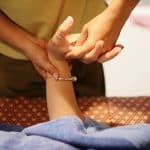As we further venture into the world of sports and fitness training, we come across an increasing number of tools designed to optimize athletic performance. Recently, there seems to be a surge in the use of altitude training masks, especially among boxers. These masks aim to simulate the conditions of high-altitude training, right in the confines of a regular gym or local park. But what exactly is their role in preparing athletes for high-altitude fights? Let’s delve into this topic, exploring the association between these masks, altitude training and boxing performance.
Understanding Altitude Training and Altitude Masks
To get a clear picture, let’s first understand what altitude training and altitude masks are all about.
A lire aussi : How to Design Personalized Training Programs for Master’s Level Swimmers?
Altitude training is a training method used by athletes for several decades. It involves training in areas of higher altitude, where oxygen levels are considerably lower. The idea is that this will force the body to produce more red blood cells to carry oxygen, thereby increasing the body’s oxygen-carrying capacity and endurance. When the athlete then competes at sea level, they can perform at a higher level due to their increased lung capacity and cardiovascular conditioning.
Altitude masks, on the other hand, are designed to mimic these high-altitude conditions. They work by restricting the flow of air to the lungs, forcing the wearer to work harder to breathe. This, in theory, should make the muscles associated with breathing stronger and more efficient, and the body more adept at using oxygen.
A voir aussi : Can Prehabilitation Exercises Reduce Injury Risk in Professional Dancers?
The Science Behind Altitude Masks
The use of altitude masks is based on some solid scientific principles.
When you train at high altitude, your body adjusts to the lack of oxygen by producing more red blood cells, which are the body’s main oxygen carriers. These cells remain in your system even after you return to lower altitudes, enhancing your performance.
Altitude masks aim to recreate this effect by restricting the amount of air you can breathe. This forces your body to work harder to take in the same amount of oxygen, thereby supposedly replicating the effects of high-altitude training.
However, some scientists argue against this. They point out that altitude masks do not actually change the oxygen or air pressure, but simply make it harder to breathe. They claim this is more akin to having a bad cold or asthma than training at high altitude.
Altitude Masks for Boxing Training
Boxing is a demanding sport that requires excellent cardiovascular conditioning and strength. Altitude masks, therefore, have become quite popular in boxing circles.
Many boxers and their trainers believe that these masks can enhance their performance and conditioning. The idea is that by simulating the increased effort required at high altitudes, the masks can help improve lung function and cardiorespiratory fitness, both crucial aspects of boxing performance.
In addition to the potential physiological benefits, the masks also provide a psychological edge. Wearing the mask during training can be uncomfortable and challenging, pushing the athlete’s mental toughness. This can help them stay focused and resilient during a tough fight.
The Verdict on Altitude Masks
The effectiveness of altitude masks is still a topic of debate among scientists and sports professionals. While some studies suggest that they do enhance lung function and conditioning, others claim that the benefits are insignificant or that the masks may even be counterproductive.
For instance, a study published in the Journal of Sports Science & Medicine found that while altitude masks did improve tidal volume (the amount of air inhaled or exhaled during regular breathing), they did not significantly enhance athletic performance. So, while athletes might feel a difference while training with the mask, the benefits might not translate to a noticeable improvement in performance.
Furthermore, some experts warn of the potential dangers of using altitude masks, especially for those with underlying respiratory or cardiovascular conditions. The increased respiratory resistance can increase blood pressure and potentially lead to fainting or other cardiovascular issues.
Therefore, if you’re considering using an altitude mask for boxing training, it’s essential to consult with a trainer or medical professional first. They can assess your fitness level and determine whether this tool is right for you. Also, remember to start slowly and gradually increase the intensity to avoid any potential risks.
Despite the ongoing debate, one thing is clear. There is no shortcut to improved performance. Whether you choose to use an altitude mask or not, the key to enhancing your boxing performance lies in consistent, hard work, a well-rounded training regimen, and sound nutritional practices.
Altitude Masks in Different Combat Sports
When it comes to combat sports, the utility of altitude masks extends beyond boxing. Athletes involved in mixed martial arts, jiu-jitsu, and other similar disciplines also routinely use these masks in their training regimens.
In sports like Brazilian jiu-jitsu, the intensity of the fights can be just as high, if not higher, than boxing. The athlete’s cardiovascular conditioning plays a crucial role in this type of combat sport. Hence, the idea behind using altitude masks is to help these athletes improve their cardiovascular performance, similar to boxers.
Using altitude masks, athletes aim to increase their red blood cell count, allowing more oxygen to be transported to their muscles during high-intensity bouts. The masks are also used to try and improve the efficiency of the athletes’ respiratory muscles, making them stronger and more resistant to fatigue.
However, it’s worth noting that the same concerns and debates that surround the use of altitude masks in boxing extend to their application in other combat sports. The claims that these masks can simulate high-altitude conditions and thereby enhance athletic performance are met with skepticism by some scientists and sports professionals. They argue that while the masks do make breathing more difficult, they do not truly replicate the conditions of high-altitude training.
Conclusion: The Final Bell on Altitude Masks
In conclusion, altitude masks are a widely used tool among athletes, especially those involved in high-intensity combat sports like boxing and Brazilian jiu-jitsu. They are designed to simulate the conditions of high-altitude training, theoretically improving the athletes’ oxygen-carrying capacity and cardiovascular conditioning.
However, while some athletes and trainers swear by their effectiveness, the science behind these masks remains inconclusive. While some studies suggest that they may improve aspects such as tidal volume, others argue that this doesn’t necessarily translate into better athletic performance, at least not to a significant extent.
In addition, concerns have been raised about the potential health risks associated with their use, especially for individuals with underlying respiratory or cardiovascular conditions. Therefore, it’s crucial that anyone considering using an altitude mask consult with a professional to understand the potential benefits and risks.
However, as with any training tool, altitude masks are not a magic solution. They are just one piece of the puzzle, and their potential benefits should not be a substitute for the fundamentals of training: hard work, consistency, and proper nutrition. In the ever-evolving world of sports and fitness, athletes and trainers must be cautious and informed while incorporating new tools into their regimens.
Despite the debates surrounding altitude masks, they have found a place in the boxing and combat sports world. Whether that place is merited by science, or simply a result of perceived benefits and mental toughness, is still up for discussion. However, for the time being, they remain a staple in the training kit of many athletes, adding another layer to the multifaceted world of sports training.











